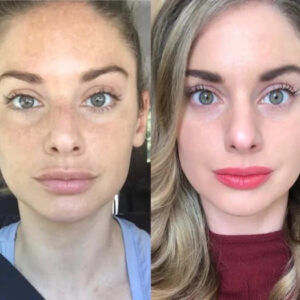Adomuka Svanasana, commonly known as Downward-Facing Dog, is one of the most iconic and widely recognized yoga postures in the world. Whether you are new to yoga or an experienced practitioner, this foundational pose appears in almost every yoga sequence—from Hatha and Vinyasa to Ashtanga and Restorative practices. More than just a transition or resting posture, Adho Mukha Svanasana offers a powerful combination of strength, flexibility, grounding, and rejuvenation. This ultimate guide explores everything you need to know about the pose: its meaning, steps, benefits, common mistakes, variations, and tips to deepen your practice.
Understanding the Meaning of Adho Mukha Svanasana
The Sanskrit name Adho Mukha Svanasana breaks down into four parts:
-
Adho – downward
-
Mukha – face
-
Svana – dog
-
Asana – pose
Together, it translates to “Downward-Facing Dog Pose”, inspired by the natural stretching movements of dogs who often lengthen their backs by pushing their chest downward and lifting their hips. This intuitive stretch is mirrored in the yoga pose, promoting length, release, and energy flow throughout the entire body.
How to Practice Adho Mukha Svanasana Step-by-Step
To experience the full benefits of this asana, it is important to practice it with correct alignment. Here is a step-by-step guide:
-
Start on your hands and knees in a tabletop position, with your wrists aligned under your shoulders and knees under your hips.
-
Spread your fingers wide, pressing evenly through your palms and grounding through all corners of your hands.
-
Tuck your toes under and gently lift your knees off the floor.
-
Push your hips upward, straightening your legs as much as feels comfortable. Aim for an inverted “V” shape.
-
Lengthen your spine, sending your hips back and up, while keeping your ears aligned with your upper arms.
-
Relax your head and keep your neck long without strain.
-
Press your heels down toward the mat. It’s okay if they don’t touch.
-
Engage your core and thighs, distributing weight evenly between your upper and lower body.
-
Hold the pose for 5 to 10 deep breaths, maintaining smooth and steady breathing.
-
To come out, gently lower your knees back to the mat and return to tabletop.
With consistent practice, you will find it easier to maintain stability, length, and comfort in the pose.
Key Benefits of Adho Mukha Svanasana
Downward-Facing Dog is not only a staple of yoga, but a powerhouse posture that supports the body and mind in multiple ways. Here are some of its most important benefits:
1. Strengthens the Upper Body
This pose engages the arms, shoulders, and upper back, promoting stability and tone. Over time, it builds functional strength that supports other yoga postures.
2. Stretches the Entire Posterior Chain
Adho Mukha Svanasana deeply stretches the hamstrings, calves, arches of the feet, and the spine. It is one of the best poses for releasing back tension.
3. Improves Circulation
By positioning the heart above the head, this mild inversion helps enhance blood flow, energizing the body and refreshing the mind.
4. Boosts Flexibility and Mobility
The pose promotes flexibility in the legs, hips, and shoulders, making it easier to move with ease both on and off the mat.
5. Calms the Mind and Reduces Stress
Focusing on long, even breaths while holding this posture activates the parasympathetic nervous system, helping to relieve anxiety and mental fatigue.
6. Enhances Posture
By lengthening the spine and opening tight muscles, this pose supports better posture and alignment in daily life.
Common Mistakes and How to Fix Them
Even though Adho Mukha Svanasana is considered a foundational pose, many practitioners unknowingly fall into misalignment. Here are common mistakes and correction tips:
1. Rounding the Back
Many people lift their shoulders too high, causing the spine to round.
Fix: Bend your knees slightly, lift your hips higher, and focus on lengthening the spine.
2. Collapsing the Shoulders
Shoulders collapsing toward the ears creates unnecessary tension.
Fix: Rotate your upper arms outward and draw your shoulder blades down the back.
3. Overly Straightened Legs
Locking the knees can compromise alignment.
Fix: Keep a micro-bend in the knees to maintain stability.
4. Weight Dumped into the Wrists
This leads to wrist pain and poor balance.
Fix: Press through your fingertips and engage your arms to distribute weight evenly.
5. Heels Forced to Touch the Ground
Forcing the heels can strain the legs.
Fix: Let the heels stay lifted if needed; focus on stretching gently.
Beginner-Friendly Modifications
Adho Mukha Svanasana can be challenging at first, especially for those with tight hamstrings or stiff shoulders. Try these modifications:
1. Bend Your Knees Generously
This helps lengthen the spine without straining the legs.
2. Use Yoga Blocks
Place blocks under your hands to reduce pressure on your upper body.
3. Shorten Your Stance
A slightly shorter distance between hands and feet can help beginners find balance.
4. Rest in Child’s Pose
Alternate between Downward Dog and Child’s Pose if you need breaks.
Advanced Variations to Deepen the Pose
For practitioners who want to explore beyond the basic posture, these variations offer a deeper stretch and greater strength:
1. Three-Legged Downward Dog (Tri Pada)
Lift one leg high while keeping the hips square.
2. Down Dog Split
Lift one leg and open the hip for a more intense stretch.
3. Downward Dog to Dolphin Pose
Move to your forearms to build shoulder and core strength.
4. Downward Dog Twist
Reach one hand to the opposite ankle to enhance balance and spinal mobility.
When to Avoid Adho Mukha Svanasana
Though this pose is safe for most people, certain conditions require caution:
-
Severe wrist or shoulder injuries
-
High blood pressure (consult a professional)
-
Glaucoma or eye pressure issues
-
Late-stage pregnancy (modifications recommended)
Always listen to your body and practice mindfully.
Final Thoughts
Adho Mukha Svanasana is much more than a transitional pose—it is a powerful, transformative asana that strengthens the body, calms the mind, and aligns the breath. By practicing with awareness, proper alignment, and patience, anyone can experience the full benefits of this iconic posture. Whether used to warm up, cool down, or flow through a sequence, Downward-Facing Dog remains a cornerstone of yoga practice for its ability to energize, restore, and balance the entire body.





